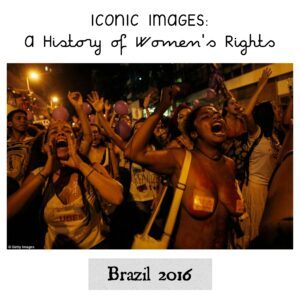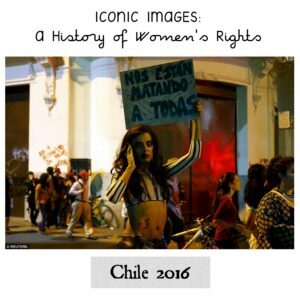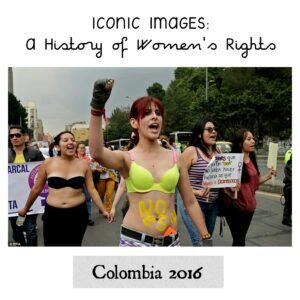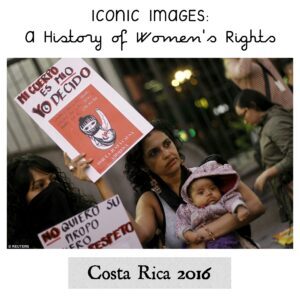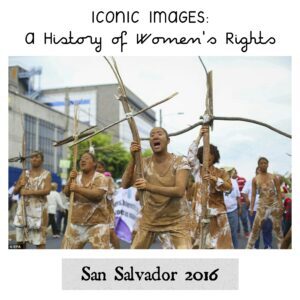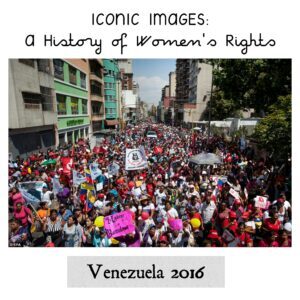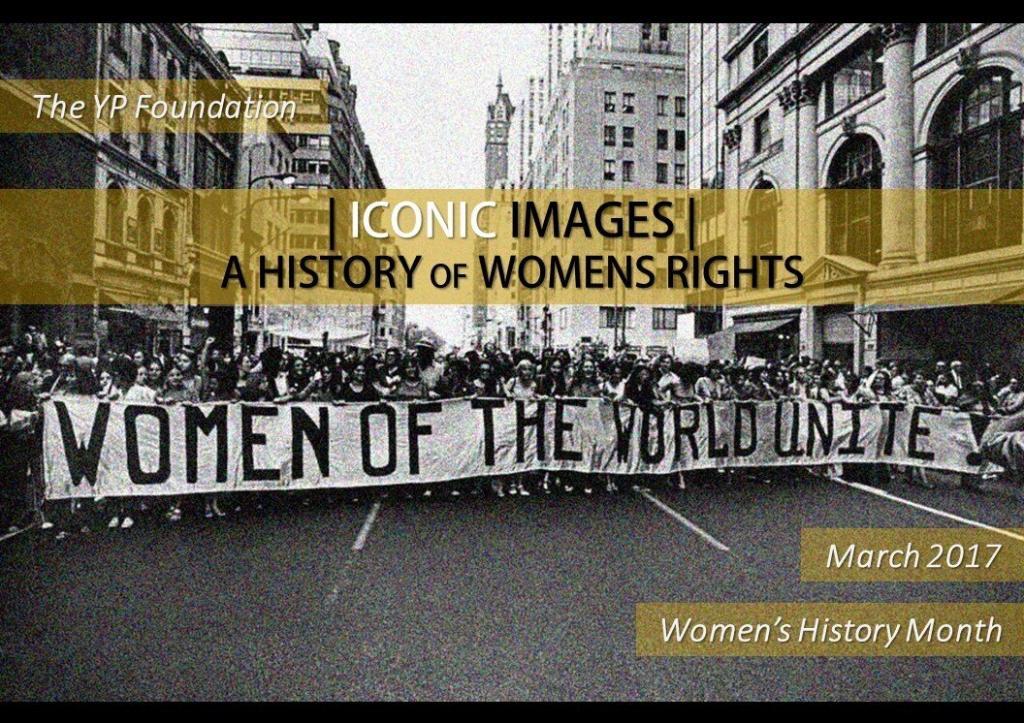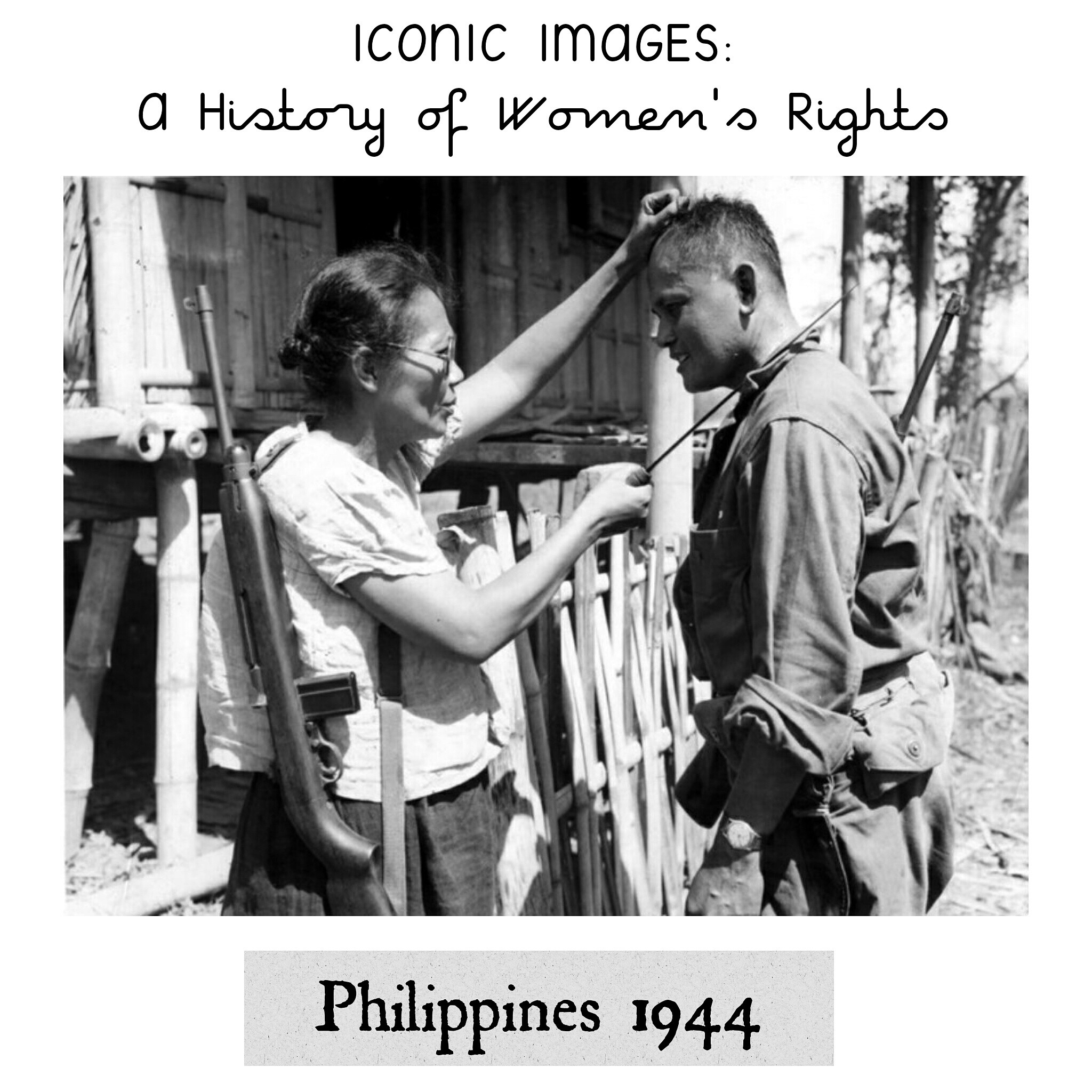
Submitted by Denise Matias from the Philippines:
This is Captain Nieves Fernandez, a guerilla woman from the Philippines, who fought against Japanese occupants. She was a teacher before and after World War II.
Here, she is seen demonstrating to a US soldier how she used a long knife to kill Japanese soldiers.
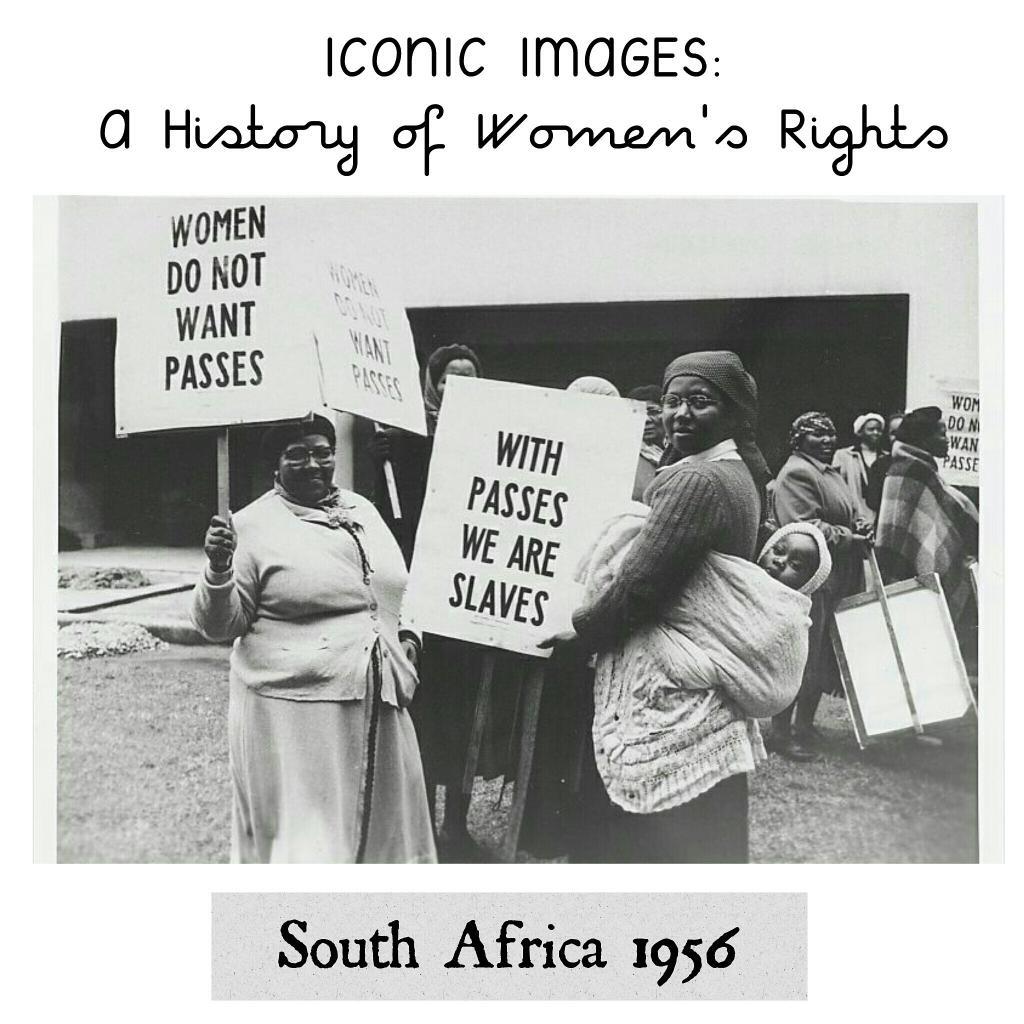
Here we see women demonstrate against the Pass Laws in Cape Town on August 9th 1956, on the same day as the massive national women’s protest in Pretoria.
The pass laws were a type of internal passport system designed to segregate the population, which severely limited the movements of the black African citizens.
Before the 1950’s it was largely applied to African men, and attempts to apply it to women was met with overwhelming protests.
Image source: www.overcomingaparthied.msu.edu
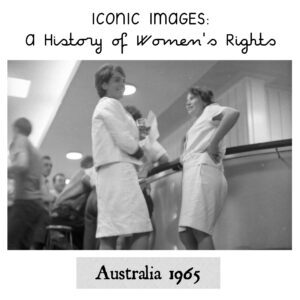
In this photo we see Rosalie Bognor and Merle Thornton chain themselves to the bar at Brisbane’s Regatta Hotel. Why?
Well, many pubs across Australia had a special ‘ladies lounge’ for women to drink, as they were banned from entering public bars. And even then, sometimes women were allowed in the lounge only if were they accompanied by a man.
The feminist movement was not willing to back down on this. These ladies defiantly left the lounge in pubs, marched into public bars and demanded drinks. Chaining themselves to the bars was a popular form of protest to get their point across.
Eventually the the government relented and passed a legislation allowing women to drink at any public bar they wished to.
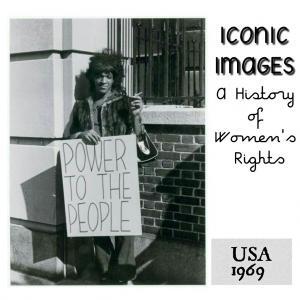
Submitted by Anushka Aqil from the US:
Marsha “Pay It No Mind” Johnson, a Black transwomen, was a gay rights and transgender activist.
She is most known for her work during the Stonewall Riots in the 1960’s and 70’s, as well as founding STAR: Street Tranvestite Action Revolutionaries, alongside Sylvia Rivera, a transgender rights group and a shelter for homeless transgender teens and drag queens.
Marsha brought visibility to the work of Black transwomen and is a beacon for all she did for the rights and safety of transgender people and especially, transgender youth.
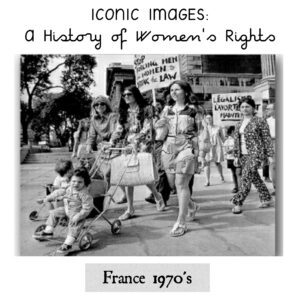
Submitted by Juliet Dixon from France:
The struggle for the right to contraception and abortion was at the heart of feminist struggles of the 1970’s in France. Here we see women demonstrating for the right to abort.
A manifesto written by Simone de Beauvoir (the most iconic feminist by far, and companion to philosopher Jean Paul Sartre) called the “Manifesto of the 343 Bitches” was a declaration signed by 343 women who admitted to have had abortions when it was illegal in France. This list included actresses and prominent women figures of the time.
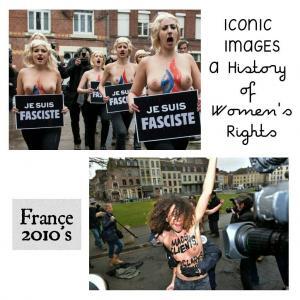
Submission from Juliet Dixon from France:
FEMEN is a feminist protest group, one that is quite controversial and doesn’t quite have consensus among feminists [but feminist streams are diverse, rich, and beautiful right?] They are most known for demonstrating bare-chested anywhere they see fit.
The top left image is a protest against Marine Le Pen, the candidate for the far right in the North of France.
The bottom right image is from a protest against Dominique Strauss-Kahn, the prior IMF head, who assaulted a cleaning lady in his hotel in New York a few years earlier.
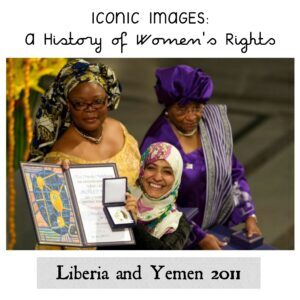
Tawakkul Karman [seen holding the award in this photo] is a leading women’s rights and democracy activist in Yemen, so vocal in her stance that she has been targeted by government. She is also the first Arab women to win the Nobel Peace Prize.
Liberian president Ellen Johnson Sirleaf and compatriot Leymah Gbowee shared the award with Karman. They mobilised fellow women against the country’s civil war, including organising a sex strike.
This award is seen as significant recognition in favour of the empowerment of women, especially in the third world. [Sourced from abc.net.au]
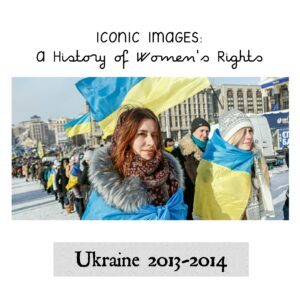
Submitted by Tamara Martsenyuk from Ukraine:
Events in central Kyiv and other Ukrainian cities, became famous as a so-called “Euro Revolution”, better known as “Euromaidan”. Protests by Ukrainian citizens against their government commenced in November 2013, when President Yanukovych announced a decision to turn Ukraine away from the EU, and continued for about three months.
Unlike previous “revolutions”, the Euromaidan revolution was marked by – as was visible in the media and public discourses – diverse women’s participation, through which women challenged traditional gender roles and reclaimed visibility, recognition, and respect.

Submitted by Brittny Anderson from Canada:
Canada is now represented by 15 female and 15 male appointed cabinet members. 2015 marks the first time gender parity has been achieved among ministers at the federal level. Previously, the closest the country had reached to equal representation were the cabinets of 2003 and 2008, with women making up 29% of the total. Before this landmark election, only approximately one in four cabinet ministers were women.
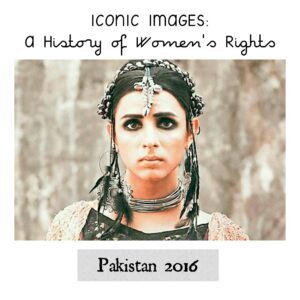
Submitted by Anushka Aqil from Pakistan:
In 2016, Kami Sid made her debut as the Pakistan’s first Khawaja Sara (transgender) model. While modelling is what brought Kami nation-wide visibility, her work as an activist for gay and transgender rights in Pakistan has been on-going and influencing culture for much longer.
Khawaja Saras have been a part of the South Asian continent’s history since the beginning of time, yet, transgender individuals continue to face extreme discrimination and have to fight to survive.
Kami’s photo shoot is one step on the way to increase positive visibility and acceptance, but we have a long way to go.
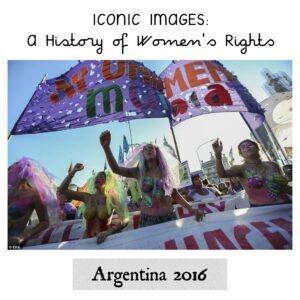
On International Women’s Day in 2016, thousands of people across capital cities in South America took to the streets to highlight a number of human rights issues ranging from gender equality, violence against women, women’s rights and abortion laws.
Many of the protestors used their bodies as a canvas to fight for their cause, some walking topless with slogans painted across their chests and stomachs. The following is a series of photos from South America. In this photo, demonstrators march in Buenos Aires to highlight the issue of femicide- the murder of women due to their gender.
